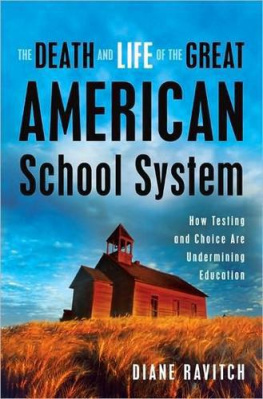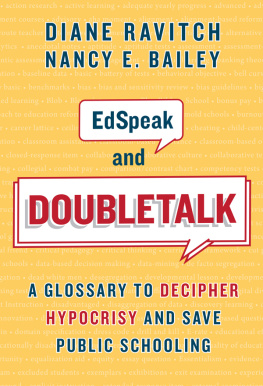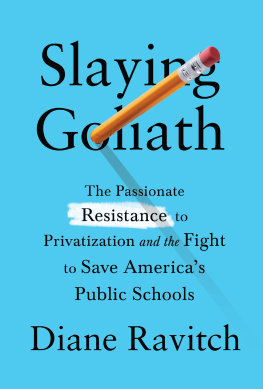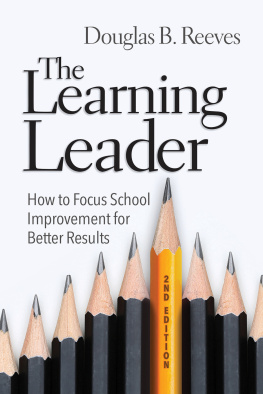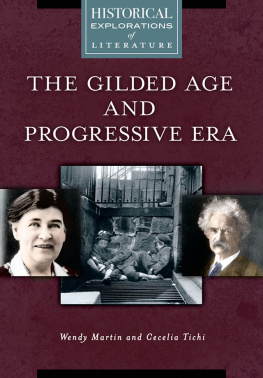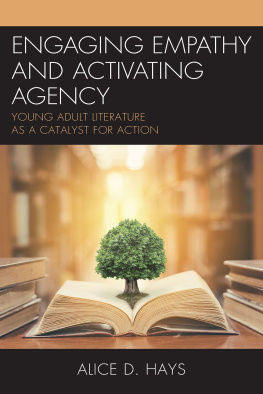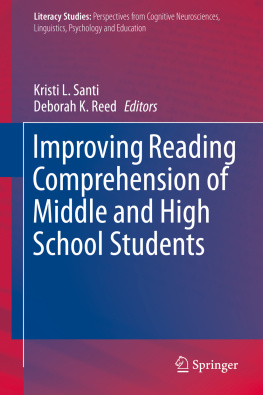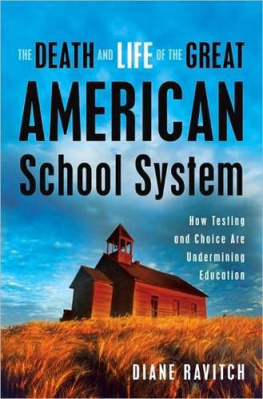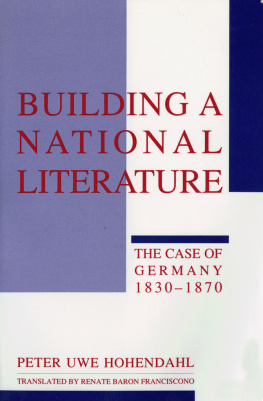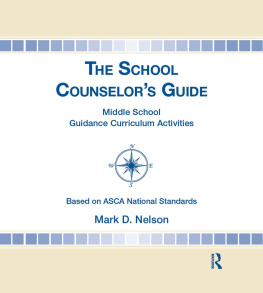The Foundations of Literacy project evolved over several years and benefited from the support and participation of a great many individuals and organizations. It was sponsored and underwritten from the outset by the National Endowment for the Humanities, a small but very important federal agency. We are deeply grateful to the Endowment and to its chairman, Lynne V. Cheney. We also thank William J. Bennett, who initiated the Endowments constructive engagement with elementary and secondary education when he served as its chairman and who launched this NEH project in 1984.
The project has been overseen throughout by Jeffrey Thomas, a capable and imaginative NEH program analyst who is notable for preferring to solve problems rather than aggravate them. It has benefited as well from the counsel of Deputy Chairman John T. Agresto and the assistance of Celeste Colgan, special assistant to the chairman. However, nothing in this book necessarily represents the views of the National Endowment for the Humanities or its staff members and employees, past or present.
The Educational Excellence Network was the organizational aegis for this project. Founded by the co-authors in 1981, the Network is a loose confederation of individuals (now numbering about 800) who share an interest in the reform and improvement of education, principally in the United States and primarily at the elementary/secondary level.
We are grateful to fellow Network members for their colleagueship, assistance and enthusiasm. More than a few of them are daily engaged in the issues this book addresses and many have made signal contributions to the quest for better education. We pay special tribute to Network member E. D. Hirsch, Jr., whose early articles on cultural literacy brought him to our attention, who has participated in other Network projects, and who is the author of the superb recent book Cultural Literacy. Hirsch was a member of the learning area committee that developed the literature portion of this assessment. We are deeply appreciative, too, for the hard work of Stephen Clements, Janice Riddell, and Gilbert Sewall, who served seriatim as the Networks administrative officer during the span of this project. But no Network member, donor, or employee is responsible for the views of the co-authors.
Finn and Ravitch also wish to express their deep gratitude to the members of the history and literature learning area committees who designed the objectives of this assessment and reviewed the test items. Their names are listed in Chapter 1. Everyone involved gave of his or her time with the expectation that this assessment would ultimately contribute to the improvement of knowledge about these subjects and to the betterment of teaching in these subjects. We hope that their participation is rewarded with success.
When the project began, the Educational Excellence Network was housed within Vanderbilt Universitys Institute for Public Policy Studies. At that time, the project director was co-author Finn, professor of education and public policy at Vanderbilt, a position from which he is presently on leave while serving in the federal government. The co-authors are grateful to the staff of the Vanderbilt Institute for Public Policy Studies, especially professors Erwin Hargrove, Frank Sloan, John Folger, and Lottie Strupp; to Vanderbilt chancellor Joe B. Wyatt and provost Charles M. Kiesler; to Dean Willis C. Hawley of Vanderbilts George Peabody College for Teachers; and to Steven Smartt of the universitys Office of Sponsored Research. Again it should be noted, though, that Vanderbilt University, its officers, and its employees are in no way responsible for the contents of this book.
When Finn went on leave from Vanderbilt to join the Education Department in the summer of 1985, the entire project moved to Teachers College, Columbia University, where Ravitch is professor of history. The Educational Excellence Network moved its headquarters as well. NEH entered into a new contract with Teachers College, and Ravitch became project director. At that point, Finn withdrew entirely from the management and direction of the project but continued with his commitment to co-writing its final reportthis bookin a private, unpaid capacity. Thus the views of his employer, the U.S. Department of Education, are not necessarily reflected in the pages of this volume.
As principal investigator and project director, Ravitch has benefited from the wise counsel and constant support of Michael Timpane, president of Teachers College; Judith Brandenburg, dean of the college; Barbara Russell, grants officer at the college; and Victor Mainente, controller of the college. She owes a special debt of thanks to Eileen Sclan, her energetic and tireless research assistant. She continues to be indebted to Lawrence A. Cremin for his understanding of educating institutions. Neither Teachers College nor any of these individuals is responsible for the views, findings, and opinions expressed in this book.
In the assessment-planning, test-development, and datagathering phases of the project, before this book was written, the vast majority of the work was performed by the Educational Testing Service (ETS). In conducting the history and literature assessment, ETS followed the procedures and protocols it customarily uses in carrying out the National Assessment of Educational Progress (NAEP), which is funded primarily by the U.S. Department of Education.
That assessment was conducted in hundreds of schools across the United States. We and the readers of this book owe perhaps the heartiest thanks to almost eight thousand young Americans enrolled in the eleventh grade during the 1985-86 school year, who sat for the history and literature portions of this assessment. Though were not generally contented with what they know, were grateful indeed for their willingness to reveal it! The validity of the entire enterprise hinges on the truthfulness and reliability of these boys and girls, as well as on the accuracy of the statistical sample of all eleventh graders that ETSs experts say they are and, of course, on the integrity of ETSs administration of the assessment itself.
As is their customary practice, ETS staff assigned to NAEP compiled and analyzed the data and made the results available for use by the NAEP project, the co-authors, and the general public. The data have been accessible to all since the spring of 1987, when a public-use data tape was produced by ETS.
Throughout the entire process, the ETS staff has been gracious and helpful. Particular thanks are due to Archie Lapointe, director of NAEP, and to Ina V. S. Mullis, deputy director. Words are really insufficient to repay Ina, who among many acts of selflessness spent Mothers Day reading a draft of this manuscript. They not only saw to the fulfilment of ETSs contractual responsibilities to this project; they also went the extra mile to give the co-authors sage advice and help guard against errors of fact and analysis. We are also grateful to ETS for encouraging this project at the outset; we especially thank its president, Gregory R. Anrig. None of these individuals or organizations is in any way responsible for anything that appears in this book, neither its authors conclusions and recommendations nor any factual errors that may have crept
Other ETS employees assigned to NAEP who have been helpful during the course of this project include Laurie Barnett, Fran Blumberg, Anne Campbell, Nancy Mead, Norma Norris, and Rebecca Zwick. We thank them, too.
In addition to the analyses produced by ETS, the project obtained analytic help from Dr. Fred W. Quelle, Jr., an independent number cruncher and computer wizard whose inspired handling of this very large data set yielded some of the most interesting findings and provocative relationships set forth in this volume. He, too, bears no responsibility for the conclusions we have drawn, but we are grateful indeed for his assistance.


